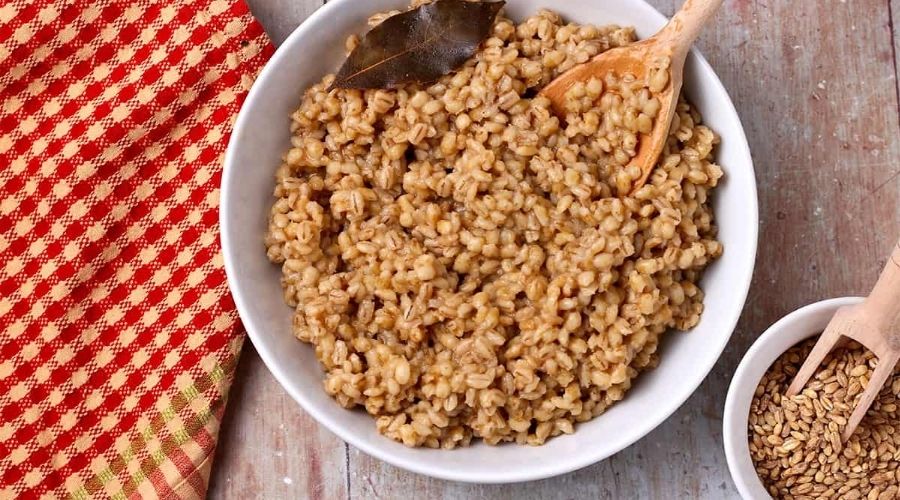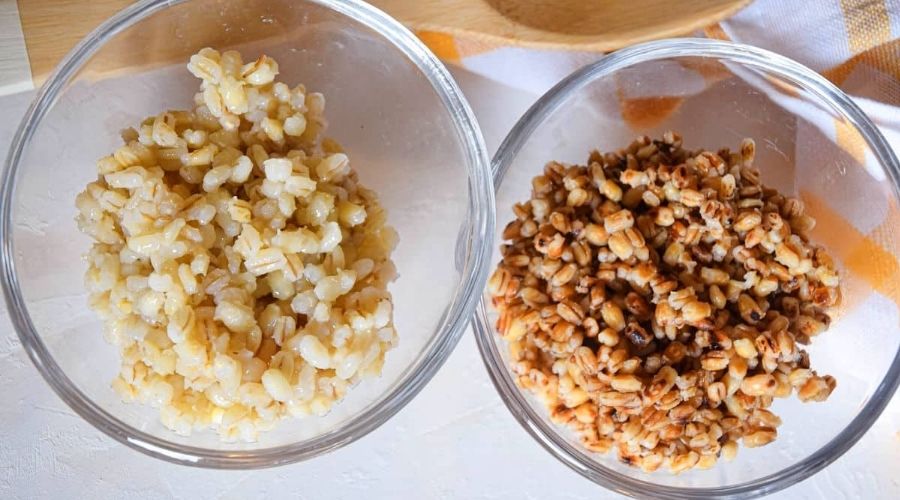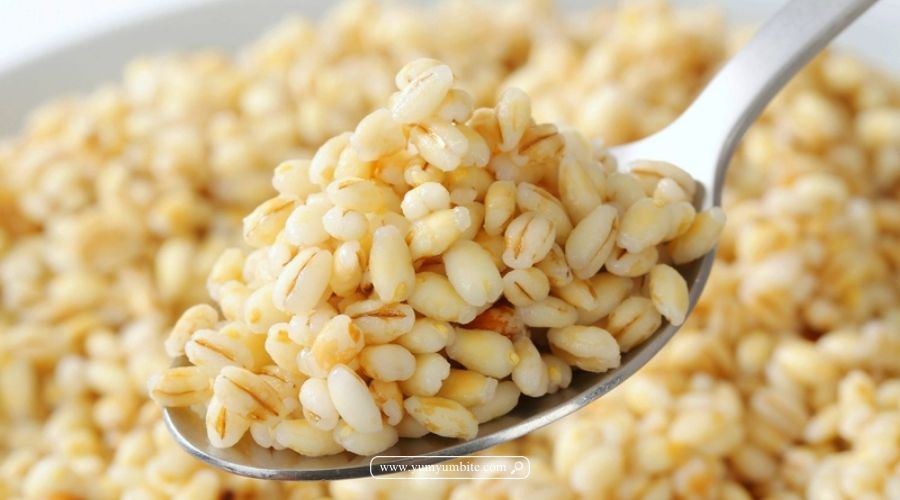Cooked barley is a versatile and nutritious grain that can elevate a variety of dishes, from hearty soups to refreshing salads.
However, to fully enjoy its benefits, proper storage is essential.
Storing cooked barley correctly not only preserves its flavor and texture but also maximizes its shelf life, allowing you to enjoy it at your convenience.
In this article, we’ll explore effective methods for storing cooked barley, tips for identifying spoilage, and answers to frequently asked questions.
Whether you’re meal prepping or simply looking to make the most of your leftovers, this guide will ensure that your cooked barley remains fresh and delicious.
Why Storing Cooked Barley Properly Matters
Properly storing cooked barley is essential for maintaining its quality, flavor, and nutritional value.
Like many grains, barley is rich in fiber, vitamins, and minerals, making it a nutritious addition to your meals.
However, if not stored correctly, cooked barley can quickly lose its desirable texture and taste.
Storing it in an airtight container helps prevent moisture absorption and the development of mold or bacteria, which can spoil the grain.
Additionally, keeping cooked barley in the refrigerator or freezer extends its shelf life, allowing you to enjoy its health benefits over several days or even weeks.
Furthermore, proper storage ensures that you have convenient, ready-to-use barley on hand for soups, salads, or side dishes, reducing food waste and saving you time in the kitchen.
By taking the time to store cooked barley properly, you can enhance your cooking experience while ensuring that your meals remain delicious and safe to eat.
How to Store Cooked Barley: A Complete Guide

Storing cooked barley properly is key to preserving its flavor, texture, and nutritional benefits.
Here’s a comprehensive guide to help you store cooked barley effectively:
1. Cool Down the Barley
Before storing, allow the cooked barley to cool to room temperature.
This step is crucial as storing hot barley can create condensation inside the container, leading to moisture build-up and potential spoilage.
2. Choose the Right Container
Select an airtight container to store your cooked barley.
Glass or plastic containers with tight-fitting lids are ideal, as they keep out air and moisture.
Alternatively, you can use resealable plastic bags, ensuring to squeeze out as much air as possible before sealing.
3. Refrigeration
If you plan to use the cooked barley within a few days, store it in the refrigerator. Cooked barley can last for about 3 to 5 days when refrigerated.
Make sure the container is labeled with the date to keep track of its freshness.
4. Freezing for Longer Storage
For longer storage, freezing is the best option. Place the cooled barley in an airtight container or freezer-safe bags.
Portioning it into smaller amounts can make it easier to thaw only what you need.
Cooked barley can be stored in the freezer for up to 3 months. Again, label the containers with the date to monitor its storage time.
5. Thawing Cooked Barley
When you’re ready to use frozen barley, thaw it in the refrigerator overnight or reheat it directly from frozen. For quick reheating, you can use a microwave or stovetop.
Add a splash of water to help regain moisture during reheating.
6. Check for Quality
Before consuming stored barley, always check for any signs of spoilage, such as an off smell, unusual texture, or mold. If anything seems off, it’s best to discard it.
7. Utilize Leftovers Creatively
Cooked barley is versatile and can be used in various dishes. Consider adding it to salads, soups, stews, or grain bowls.
Having cooked barley readily available makes it easier to incorporate healthy grains into your meals.
By following these steps, you can ensure that your cooked barley stays fresh and ready to enhance your dishes, making meal prep easier and more enjoyable.
What to Look for While Storing Cooked Barley
When storing cooked barley, there are several important factors to consider to ensure its quality and safety. Here’s what to look for:
1. Cooling Properly
Before storing, make sure the cooked barley has cooled to room temperature.
This helps prevent condensation, which can lead to mold growth and spoilage.
2. Container Selection
Use airtight containers to store your barley. Look for options made of glass or high-quality plastic that seal tightly.
If using resealable bags, ensure you expel as much air as possible before sealing.
3. Storage Temperature
For short-term storage, keep cooked barley in the refrigerator at a temperature below 40°F (4°C).
If you plan to store it for longer, consider freezing it, ensuring the freezer maintains a temperature of 0°F (-18°C) or lower.
4. Portion Sizes
Consider dividing cooked barley into smaller portions.
This makes it easier to thaw only what you need, minimizing waste and ensuring the remainder stays fresh.
5. Shelf Life Awareness
Be mindful of how long the cooked barley has been stored.
In the refrigerator, it typically lasts 3 to 5 days, while frozen barley can remain good for up to 3 months. Always label your containers with the date to track freshness.
6. Quality Checks
Before consuming stored barley, check for any signs of spoilage.
Look for off smells, changes in color, or the presence of mold. If any of these are present, it’s safer to discard the barley.
7. Moisture Control
Ensure that the barley is completely dry before storing.
Excess moisture can promote bacterial growth and spoilage, so draining any excess liquid after cooking is crucial.
By paying attention to these factors, you can ensure that your cooked barley remains fresh, safe, and delicious, ready to enhance your meals at any time.
How to Choose the Right Accessories for Storing Cooked Barley

Selecting the right accessories for storing cooked barley is essential for maintaining its quality and extending its shelf life.
Here are key considerations to help you choose the best storage solutions:
1. Airtight Containers
Opt for airtight containers that prevent air and moisture from entering.
Glass containers with silicone seals or high-quality plastic containers with locking lids are excellent choices.
These materials help keep cooked barley fresh for longer periods.
2. Freezer-Safe Options
If you plan to freeze cooked barley, ensure the containers or bags are labeled as freezer-safe.
Look for thick plastic bags or containers that can withstand low temperatures without cracking or breaking.
3. Portion Control
Consider using smaller containers or freezer bags for portioning cooked barley.
This allows you to thaw only what you need at any given time, reducing waste and ensuring that the remaining barley stays fresh.
4. Labels and Markers
Invest in labels or use masking tape and permanent markers to date your containers.
This helps you keep track of how long the barley has been stored, making it easier to manage freshness.
5. Measuring Tools
Having measuring cups or a kitchen scale handy can help you portion out cooked barley accurately, especially if you’re preparing it for specific recipes or meal prep.
6. Sealable Bags
For space-saving storage, resealable plastic bags are a great option.
Make sure to remove as much air as possible before sealing to minimize freezer burn and spoilage.
7. Storage Bins
If you’re storing larger quantities, consider using clear storage bins.
These allow you to see the contents at a glance and keep your pantry organized, making it easier to find your cooked barley when needed.
By carefully selecting the right accessories for storing cooked barley, you can ensure that your grains remain fresh, flavorful, and ready to elevate your meals whenever you need them.
How to Tell If Cooked Barley Is Bad After Storing
Determining whether cooked barley is still good to eat is crucial for both safety and flavor.
Here are the signs to look for when assessing stored cooked barley:

1. Smell
One of the first indicators of spoilage is the smell. Fresh cooked barley should have a mild, nutty aroma. If you detect any sour, rancid, or off-putting odors, it’s best to discard it.
2. Visual Inspection
Examine the barley closely. Fresh cooked barley should be a uniform color and texture. Look for any signs of discoloration, such as dark spots or an unusual change in color.
Mold growth, which can appear as fuzzy patches, is a definite sign that the barley is bad.
3. Texture
Touch the barley to assess its texture. Cooked barley should be soft and slightly chewy.
If it feels slimy or excessively mushy, this indicates spoilage.
4. Taste Test
If the barley looks and smells fine but you’re still unsure, you can perform a small taste test.
A bitter or sour taste is a sign that the barley has gone bad and should not be consumed.
5. Storage Duration
Keep track of how long the cooked barley has been stored. In the refrigerator, it should be consumed within 3 to 5 days.
If it has been in the freezer for more than 3 months, its quality may have deteriorated even if it doesn’t show visible signs of spoilage.
6. Packaging Integrity
If you’re using resealable bags, check for any punctures or leaks.
Damaged packaging can allow air and moisture in, leading to spoilage, even if the barley itself looks okay.
By being vigilant and knowing what to look for, you can ensure that you enjoy safe and delicious cooked barley, avoiding any potential food safety issues.
1. How long can cooked barley be stored in the refrigerator?
Cooked barley can be stored in the refrigerator for about 3 to 5 days.
Make sure it’s in an airtight container to maintain its freshness.
2. Can I freeze cooked barley?
Yes, you can freeze cooked barley. It can last in the freezer for up to 3 months when stored in airtight containers or freezer-safe bags.
Portioning it into smaller amounts can make it easier to thaw.
3. How should I cool cooked barley before storing it?
Allow the cooked barley to cool to room temperature before storing.
This helps prevent condensation inside the container, which can lead to spoilage.
4. What type of container is best for storing cooked barley?
Airtight glass or plastic containers are ideal for storing cooked barley.
Ensure the containers have tight seals to keep out moisture and air.
5. How can I tell if cooked barley has gone bad?
Signs of spoilage include an off smell, discoloration, a slimy texture, or mold growth.
If you’re unsure, performing a small taste test can also help determine if it’s safe to eat.
6. Is it necessary to label my storage containers?
Yes, labeling your storage containers with the date helps you keep track of how long the cooked barley has been stored, making it easier to manage freshness and prevent waste.
7. Can I reheat cooked barley from frozen?
Yes, you can reheat cooked barley directly from frozen.
Use a microwave, stovetop, or oven, adding a splash of water to regain moisture during reheating for best results.
Conclusion
In conclusion, knowing how to store cooked barley properly is key to maintaining its quality and nutritional value.
By following the guidelines outlined in this article—such as using airtight containers, monitoring storage times, and being vigilant about signs of spoilage—you can enjoy this nutritious grain without waste.
With cooked barley on hand, you can easily incorporate it into a range of meals, enhancing your culinary repertoire.
Embrace the convenience and versatility of cooked barley, and make the most of this wholesome ingredient in your kitchen!
References
- https://www.themediterraneandish.com/how-to-cook-barley/
- https://www.billyparisi.com/how-to-cook-barley/
- https://www.thekitchn.com/how-to-cook-barley-cooking-lessons-from-the-kitchn-198693
- https://www.fromthecomfortofmybowl.com/how-to-cook-barley/
- https://www.theincrediblebulks.com/how-to-cook-barley-on-the-stove/


